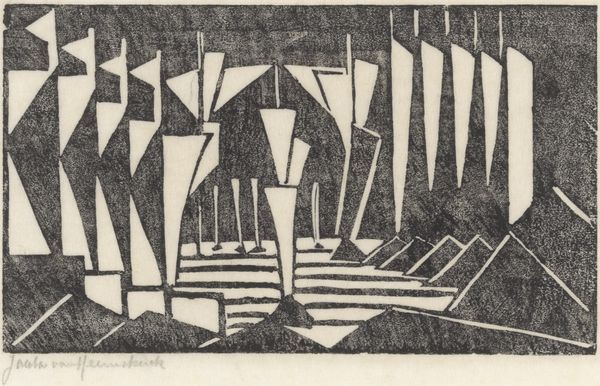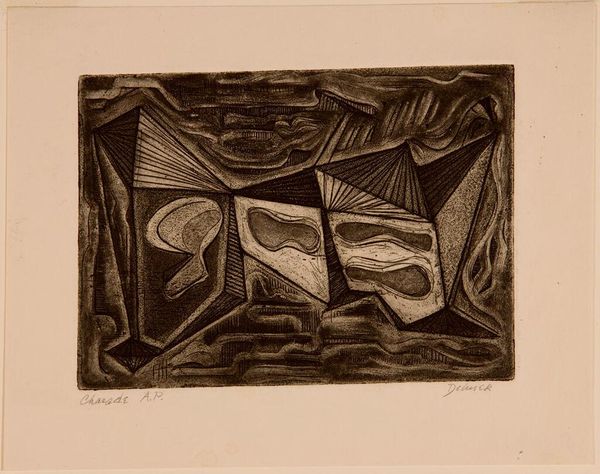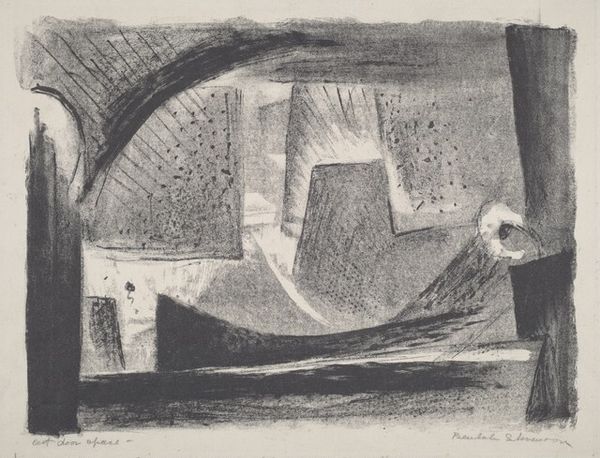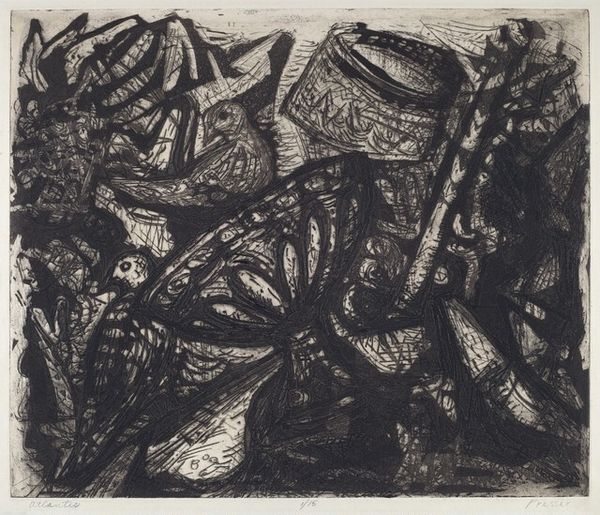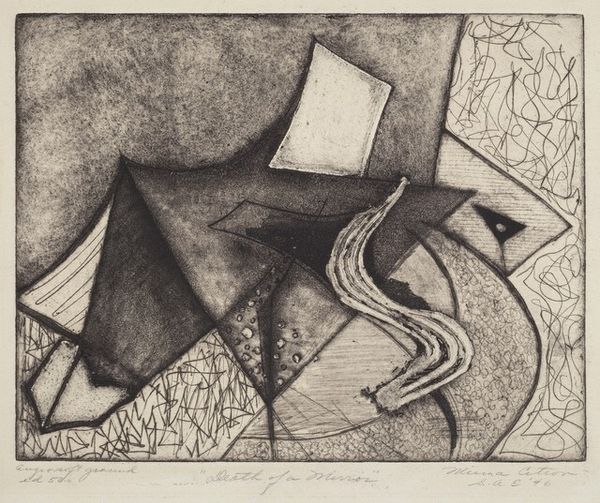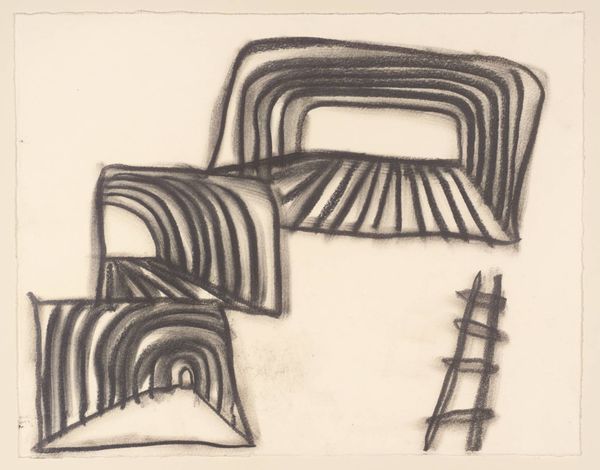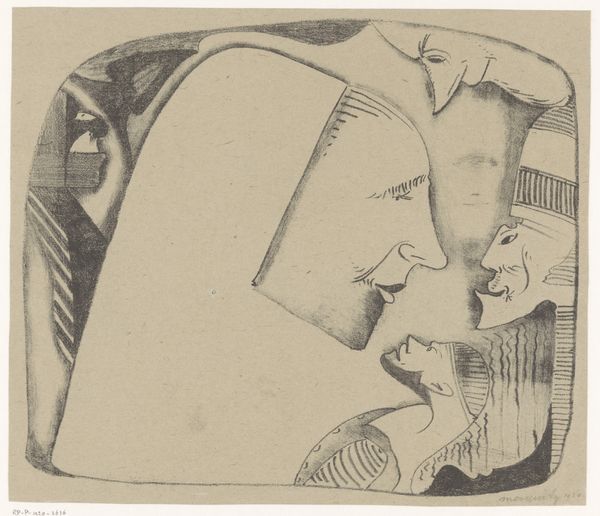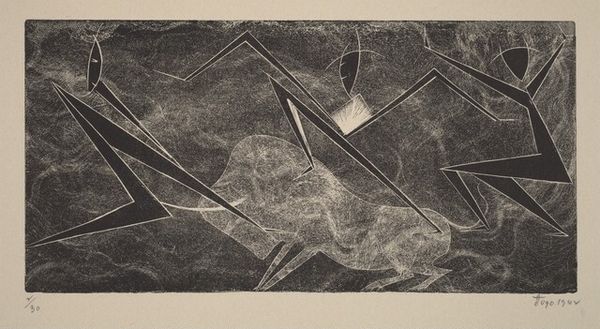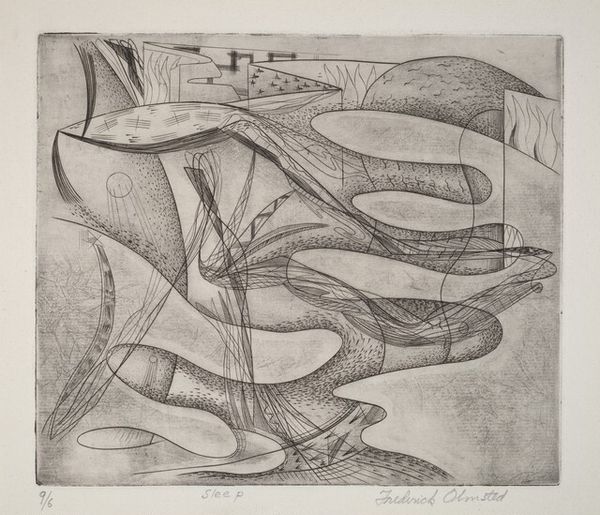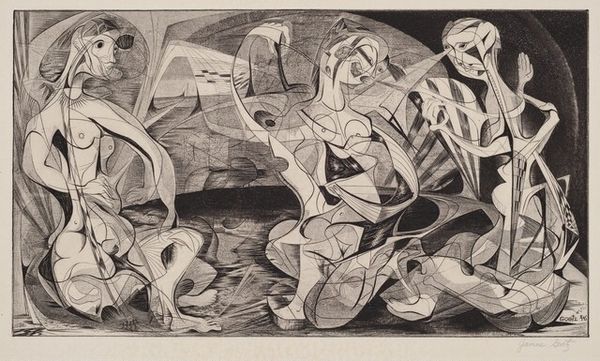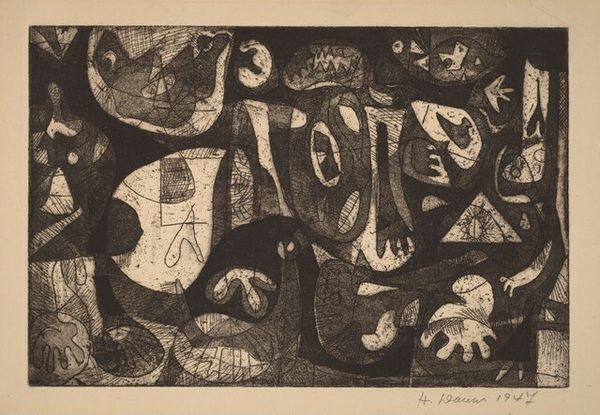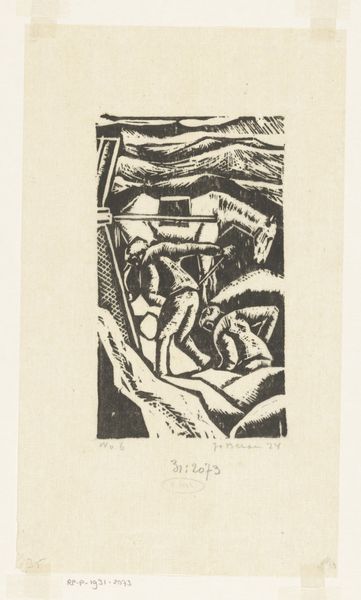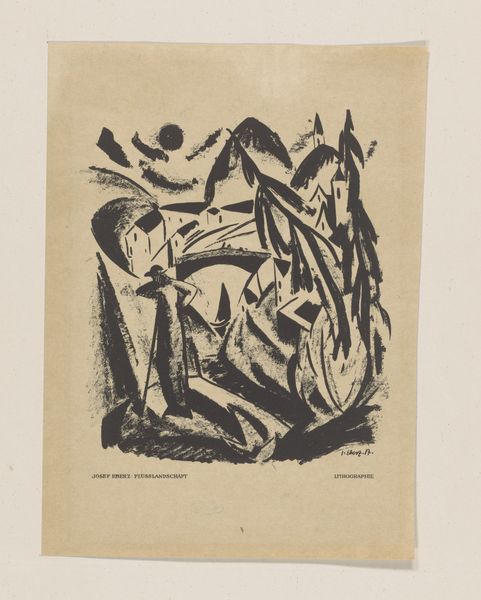
print, etching
#
abstract-expressionism
# print
#
etching
#
form
#
geometric
#
abstraction
#
line
Dimensions: plate: 12.2 x 17.6 cm (4 13/16 x 6 15/16 in.) sheet: 22.1 x 28.9 cm (8 11/16 x 11 3/8 in.)
Copyright: National Gallery of Art: CC0 1.0
Editor: Here we have Dorothy Dehner's "Charade," an etching from 1952. The geometric forms feel both chaotic and structured to me. The heavy contrast creates an almost unsettling mood. How do you interpret this work, especially considering its historical context? Curator: It's crucial to view Dehner's "Charade" through the lens of Abstract Expressionism and the social climate of the early 1950s. Post-war America grappled with anxieties and the burgeoning Cold War. How might these elements influence the seemingly abstract shapes and the print’s overall feeling of unease? The rigid geometric shapes give off an architectural appearance. I would guess Dehner wanted to highlight the social structures as ridged and without give as she experienced. Editor: So you see this piece reflecting anxieties about structure during that era? Curator: Absolutely. The title "Charade" hints at a performance, a facade. It encourages us to question the perceived order of society and the roles individuals play within it. Moreover, Abstract Expressionism served as a vehicle for artists to express the internal self in a world becoming increasingly standardized. How might Dehner's piece critique institutional conformity through its abstraction? Editor: I didn't consider the standardization piece, which makes me think of how the art world itself evolved, favoring large, bold works and maybe sidelining smaller-scale etchings. Was she pushing against the contemporary movements? Curator: It is likely Dehner was intentionally being contrary. Perhaps she saw what was being popular as exclusionary of the working class. Editor: It’s fascinating to consider how Dehner’s work operates on a deeper level, responding to the artistic landscape and broader socio-political issues. Curator: Indeed, analyzing "Charade" not only reveals Dehner's artistic skill but also provides insights into the cultural undercurrents of the time. Looking at artwork within historical context continues to expand our understanding of the artwork's purpose and influence.
Comments
No comments
Be the first to comment and join the conversation on the ultimate creative platform.
